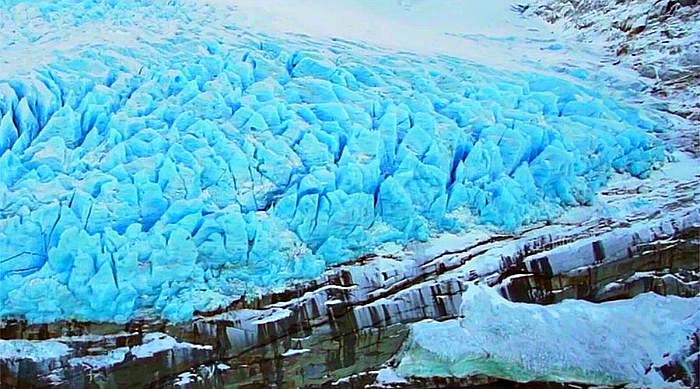Luxury ice cubes? Greens slam ‘insane’ plan to carve Norway glacier

“To me, this is an example of the world’s complete insanity,” Nina Jensen, Secretary General of WWF in Norway, told Norwegian state broadcaster NRK. “I can’t imagine how it can be sustainable to carve out ice using helicopters and then fly it around the world.”
The idea to use parts of Svartisen – mainland Norway’s second largest glacier which is projected to melt over the next century – is being pushed forward by Norwegian company Svaice. In February Svaice won a grant from the local Meloy municipality, which is enthusiastically backing the project and is due to meet on Wednesday to decide on the project’s future.

“You can sit in Dubai, Las Vegas, Monaco or Singapore and be served drinks with ice cubes from Svartisen in Nordland,” local county official Arve Knutsen told NRK earlier this year. “That alone would market and promote Nordland and Norge in a unique manner.”
The mining operations, the company insists, would not affect nature in any way, as the amount of ice they are going to take out is “literally just a cup of water in the ocean.” The venture is promoting its product as “100 percent natural, more than a thousand years old and very luxurious.”

The glacier ice cubes also “seem to melt [more slowly] … due to their compactness and the fact that the ice crystals in glacier ice are much bigger than in regular frozen water,” the company wrote on its website, claiming their product would keeps drink cooler for longer without diluting them.
The company used a Guardian article to put a positive, environmental spin on the project, citing a quote from a professor in glaciology, Jason Box, who speculated that glacial ice cubes might help consumers better understand nature’s fragility and make them cherish “the aesthetic of ice.”
“The way even small pieces of glacier ice floating in a glass resemble identically the shape and form of icebergs; that fractal geometry of nature floating in your whisky glass is aesthetically far more pleasing than artificial ice,” the professor from the Geological Survey of Denmark and Greenland (GEUS) told the paper.
Environmentalists, however, have expressed doubts that consumerists would pay any more attention to the problem of melting glaciers. “Claiming that people should get ice cubes from a glacier that will soon disappear should give the drinks a rather bitter taste,” Jensen told NRK.

Other environmental activists, such as Sigurd Enge, an adviser on Arctic issues for environmental organization Bellona, raised concerns about the entire idea of the industrial exploitation of glaciers which could accelerate melting. “If we’re talking about workers exploiting Svartisen in an industrial manner, I fear the consequences,” he told NRK.
The Svartisen glacier’s thickness has halved in some places over the past 15 years, and according to some projections it could melt completely over the next 100 years. However, according to the company, this is “not a valid fact to hinder us from taking out ice that is soon to be calving and disappearing anyway.”
Политика конфиденциальности | Правила пользования сайтом







